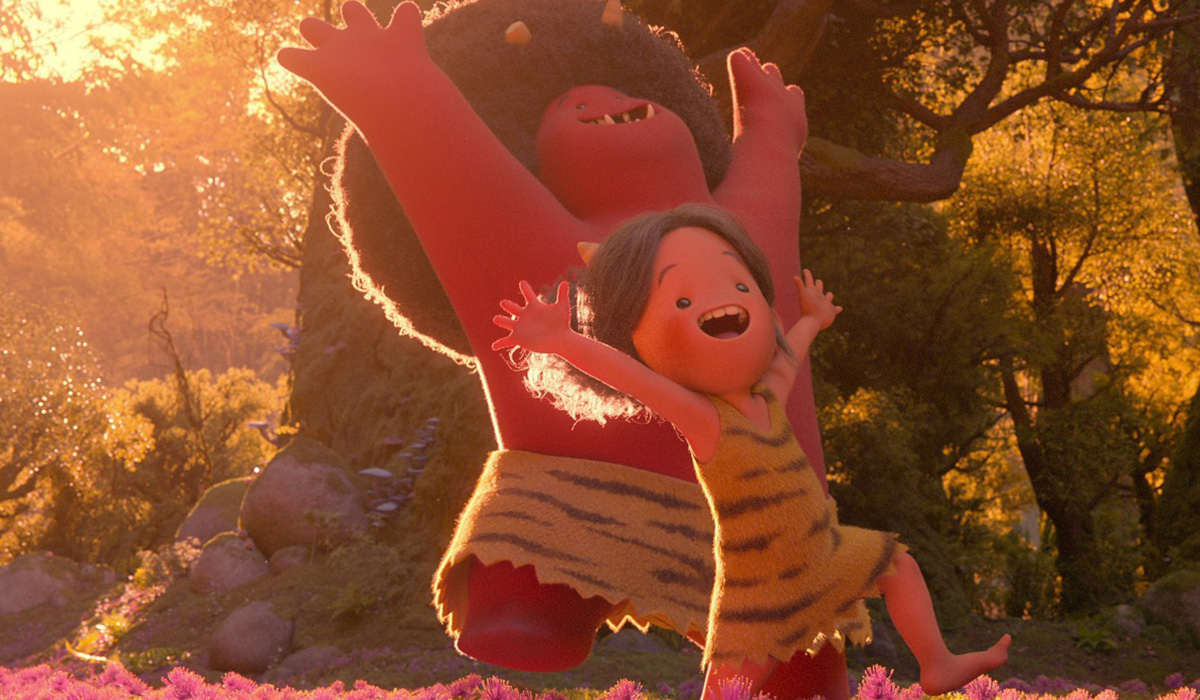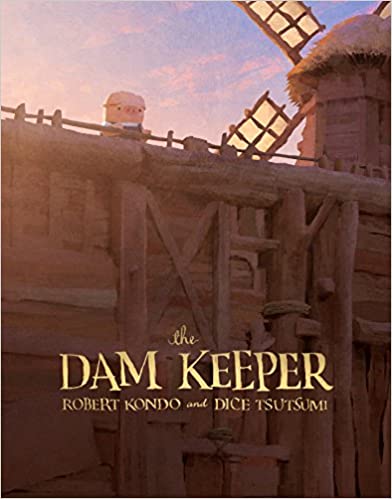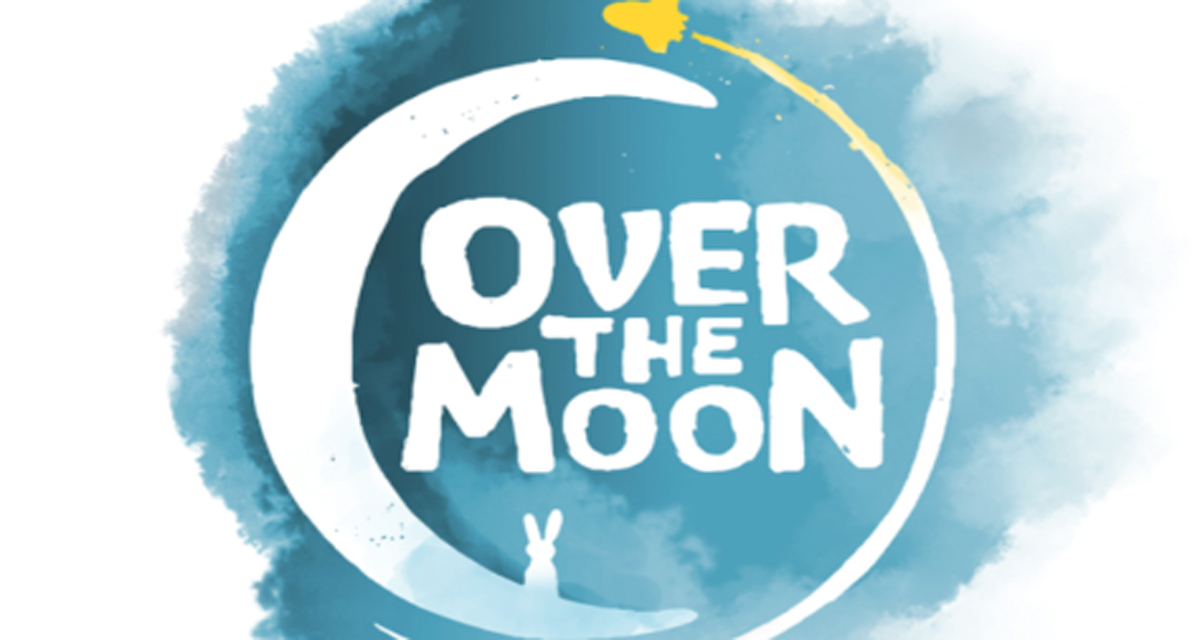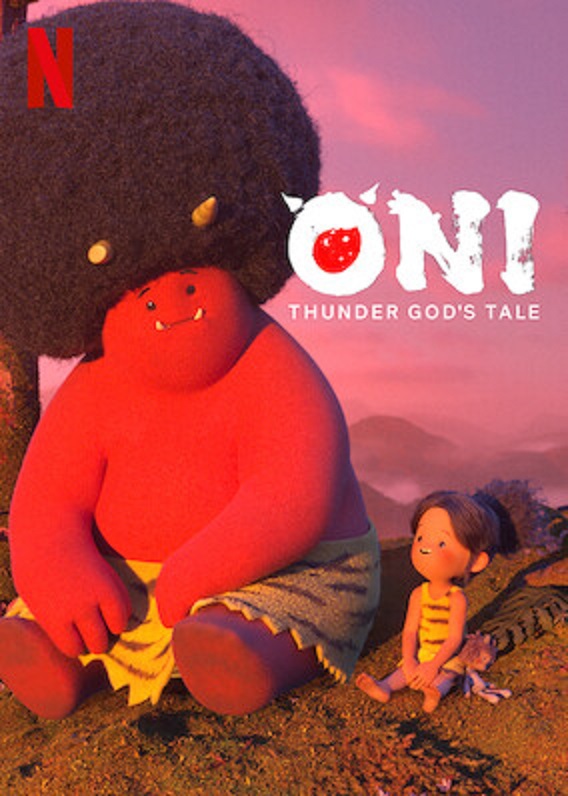 Every production of Tonko House is an event in itself, and Oni: Thunder God’s Tale is no exception. Premiering October 21, 2022 on Netflix, the four-part singular story takes place in a world filled with Japanese mythological oddball gods and monsters. One of the creatures’ free-spirited daughters, Onari, is determined to follow in the footsteps of the mighty heroes of lore, but her unique powers are yet to be revealed. Does she have what it takes to fight to protect her peaceful village from the encroaching threat of the gods’ mysterious enemies, the “Oni”?
Every production of Tonko House is an event in itself, and Oni: Thunder God’s Tale is no exception. Premiering October 21, 2022 on Netflix, the four-part singular story takes place in a world filled with Japanese mythological oddball gods and monsters. One of the creatures’ free-spirited daughters, Onari, is determined to follow in the footsteps of the mighty heroes of lore, but her unique powers are yet to be revealed. Does she have what it takes to fight to protect her peaceful village from the encroaching threat of the gods’ mysterious enemies, the “Oni”?
We had the pleasure to talk with the main creators of this series, Director Dice Tsutsumi, Production Designer Robert Kondo, and Producer Sara Sampson.
Daisuke “Dice” Tsutsumi, originally from Japan, is a filmmaker, painter, and philanthropist. A graduate from The School of Visual Arts in New York, Dice has worked as a visual development/color key artist at Blue Sky Studios on Ice Age, Robots and Horton Hears A Who! His credits at Pixar Animation include Lighting Art Director for Toy Story 3 and Monsters University.
Originally from Southern California, Robert Kondo graduated with a degree in illustration from the Art Center College of Design in Pasadena. Robert landed his dream job as a sketch artist at Pixar on their 2006 release Ratatouille. While at Pixar, his film credits included Sets Art Director for Ratatouille, Toy Story 3, and Monsters University.
In early 2012, the two art directors found themselves searching for ways to expand upon their filmmaking experience in Pixar’s art department. They decided to write and direct an independent animated short film together. The film, The Dam Keeper, was an 18-minute short that garnered an Academy Award Nomination. The search then led the two away from the comfort of Pixar’s gates to challenge themselves with the unfamiliar, to continue on the path of learning. In July 2014, Dice and Robert founded Tonko House as a place to nurture growth while telling stories for the world.
For Oni, they teamed up with Sara Sampson, who also comes from the Emeryville studio. Born and raised in Kentucky, she moved to California in 2012 to launch her career at Pixar. While there, Sara contributed to several features, such as the Academy award-winning films Coco and Inside Out. After five years at Pixar, she left to oversee production on three films, which include the first narrative Unity real-time rendered short, Sonder, the Emmy award-winning Love, Death, And Robots episode “The Witness”, and Emmy award-winning Google Spotlight Stories film and VR experience, Age Of Sail. Sara recently produced the Emmy-nominated Glen Keane Productions and Netflix Original Series Trash Truck, as well as the Academy Award-nominated short Opera, and she’s now producer and co-executive producer of Oni.
With its playful humor and fantastical world settings, along with its cinematic storytelling and the compelling depth of the hero’s journey, no doubt Oni will please every generation around the world. While very specific on Japanese folklore, it speaks to each and every one of us through a story that is definitely universal.

Animated Views: The first thing I noticed in Oni is the animation, which seems a great homage to old fashioned stop-motion animation.
Dice Tsutsumi: It’s an interesting process, because we originally wanted to produce Oni with fully stop-motion animation, but we switched to CGI because the story got bigger and more epic, so we felt like we had to use the medium that we’re comfortable with. A lot of us like Sara, Robert and myself come from Pixar and we’re very familiar with CG production pipeline. That being said, we just love the stop motion feeling that we were able to achieve while we did the pilot test in the beginning. It really felt appropriate for this story, for the world and for the characters. So, we tried to use that as a guide – visual guide, animation style guide. Even if it’s done in CG, we still use the stop motion as a feeling and look guide.
What was also interesting, what we really tried to capture was, because it’s a Japanese story and we worked with a lot of Japanese animators, we tried to use 80s anime as illustration. If you remember when Miyazaki was doing television series in the 80s like Future Boy Conan, they had a limitation of not being able to do a full frame animation, so it was always on 2s and 3s… But because of that, they tried to make sure that the poses are very strong, even if it’s limited frames, and we tried to use that as a guide because we thought that would really capture the strength of our Japanese animators, and strength of our Japanese story.

AV: The skin textures of the characters are amazing. How did you approach them?
Robert Kondo: Like Dice said it, the initial foray into bringing Oni into reality was in stop motion, and we love the tactile quality of stop motion. You just feel like you can reach your finger into the screen and touch everything. Once we have seen that and fallen in love with those puppets… that very naturally became the target for us in CG. Then we took that idea and pushed it out to the whole world of the characters, so that there is a consistency of that world that you feel they can live in. “Tactile” became a very important word for us in terms of really creating a richness for that world that we loved from stop motion. Everything feels so crafted in stop motion and we wanted to maintain that feeling.
Sara Sampson: That brings an extra layer of depth. It makes things so inviting and it just really helps you connect with the characters on a deeper level.
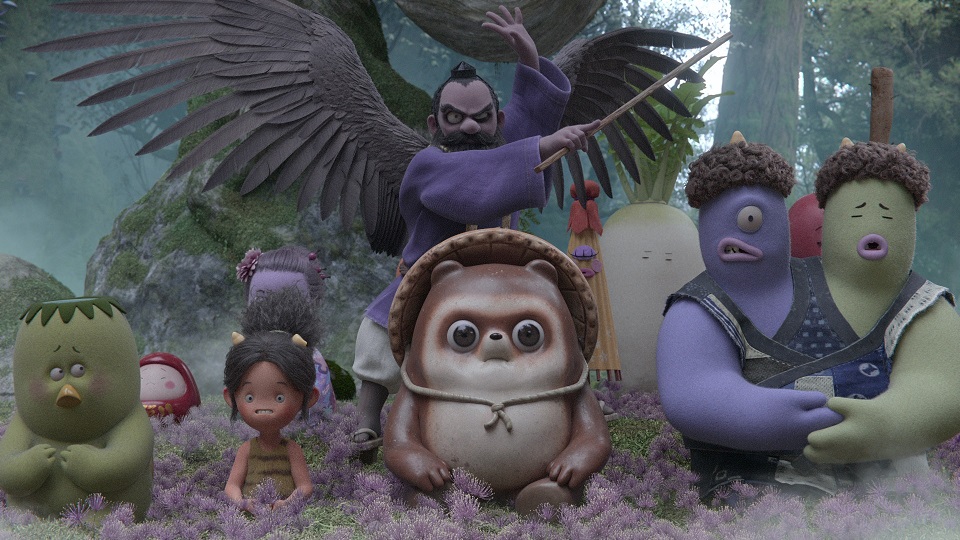
AV: The light is also very unique. For the scenes taking place during the day, we can almost feel the warmth of the sun on the leaves, the grass, and the characters, which makes the colors so vibrant.
SS: This lighting is only possible because of Dice. He has such an understanding and knowledge of lighting that it was a masterclass to all of us – understanding the principles and empowering our team with that information to create these beautiful scenes.
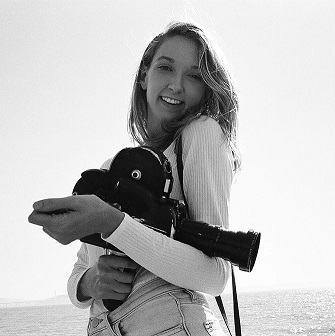
DT: Robert and I learned to tell a story through light from our Pixar days. We really love that visual tool to help tell the story. Be it The Dam Keeper, Moom or definitely Oni, it’s always about the darkness and the light that go with humanity. So, it was really important for us to use the light to really help tell the story the way we were hoping. I’ve worked on color scripts at Pixar, but as a director I couldn’t do that job. So, we appealed to two young artists who did a fantastic job on the series.
AV: The sets are also beautiful and seem almost realistic.
RK: All of it is created CG or matte painted. The forest itself comes from the brilliance of the Megalis production team that we worked with, our CG partners. All of the forest was created procedurally. Rather than building every little tree of the forest, they basically used the computer and all that it’s great for to create these wonderfully sculptural trees, and layers upon layers of moss. Also, Dice took a trip down to Yakushima Forest located in the Southern part of Japan. It’s the oldest forest of Japan, that inspired Miyazaki’s Mononoke. So, he went there and felt that place a very similar way to how you talked about how you could feel the lighting. He sat in that forest and said this is where he wanted to make his series. He wanted to capture this feeling. So, that became the high mark for our team and the CG team to hit. That’s how we were able to achieve such great vistas and such immense amount of richness in the big shots.
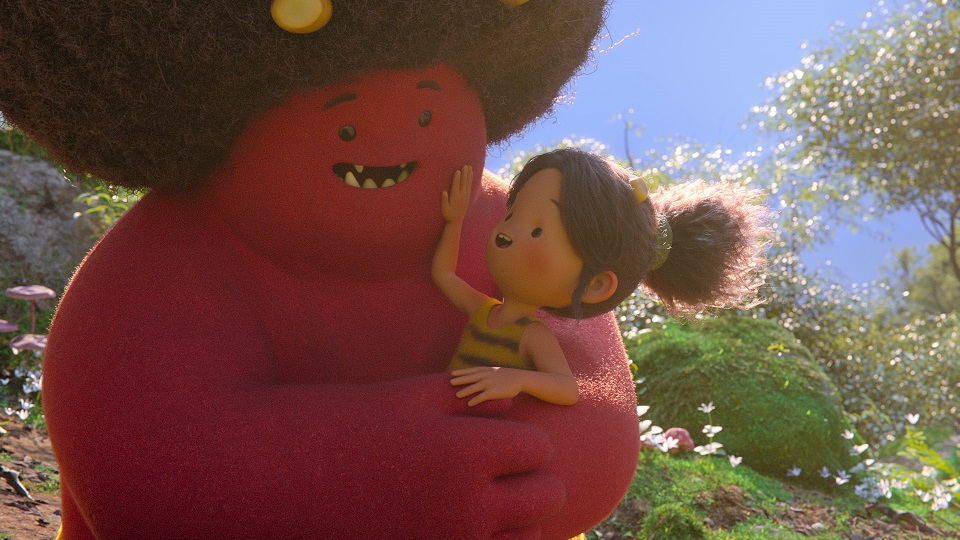
AV: When watching Oni, I thought about films like Pom Poko or Summer Days with Coo, which speak about Japanese culture and the relationship between man and nature. What is your take on those topics in Oni?
DT: It’s one important thing we always love to talk about in our films. The origin of the concept of Oni is the existence of this evil villain character in Japanese folklore. There is an interesting historical theory; it’s not, like, widely known, but some historians pointed out that Oni might be foreigners for people who didn’t look like Japanese locals back in the days. Making people whom you don’t understand a villain or like a monster: I feel like we’re still living in the same world. Humanity hasn’t really progressed since that time. We still have this natural tendency to get scared about things or people or cultures you don’t know or don’t understand. The fear of the unknown still exists today, and that’s how I started to think about this whole story of Oni.
Also, because I myself live in the United States as a foreigner for almost 30 years. My son is 10 years old and he’s living as a Japanese American who is always struggling: is he Japanese or is he American? Onari, our main character, and her journey within the series touches upon this very struggle of being an outsider that many people, young and old, face today. Oni is my attempt to show audiences around the world, including my son, an authentic Japanese story that can inspire and help individuals find their own way to embrace their unique identities. So, I felt like, this story, while it’s personal to my story, I think is a personal story to everybody. Indeed, when I spoke with Sara, when we tried to get her to come to Tonko House and produce this project in the very beginning, she said she could relate deeply to the project, too.
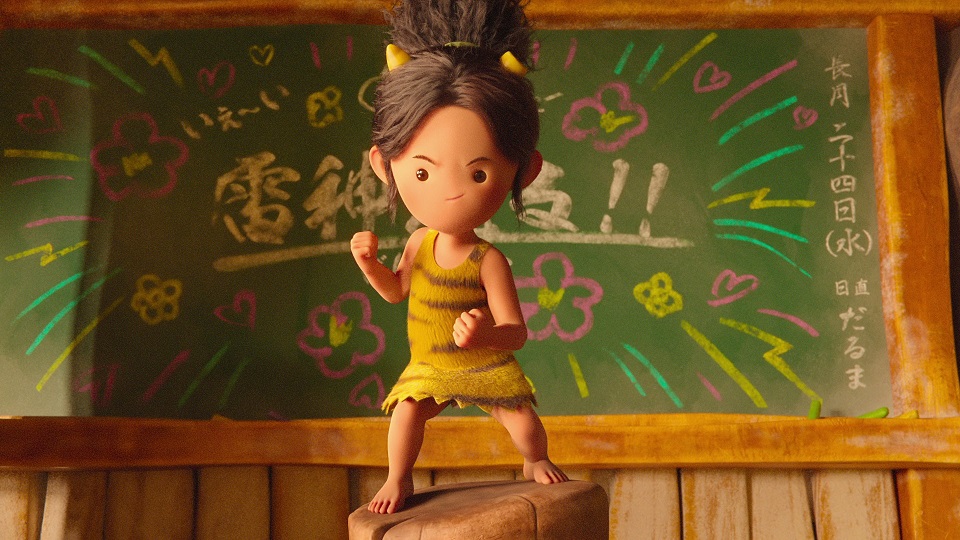
SS: Yes, I mean absolutely everything Dice said. It’s amazing how specific Oni is to his journey, but I also found my own journey in it, from Kentucky to California. It’s really about finding your own path, making your own way, and understanding that you don’t have to conform to column A or column B. To me, the beauty of Oni is that it teaches you that nothing is just black or white. There are nuances in everything, like in the Oni themselves, and that’s what makes this story so powerful.
With our thanks to Dice, Robert and Sara, and to Fumi Kitahara and Michael Rizzo.


